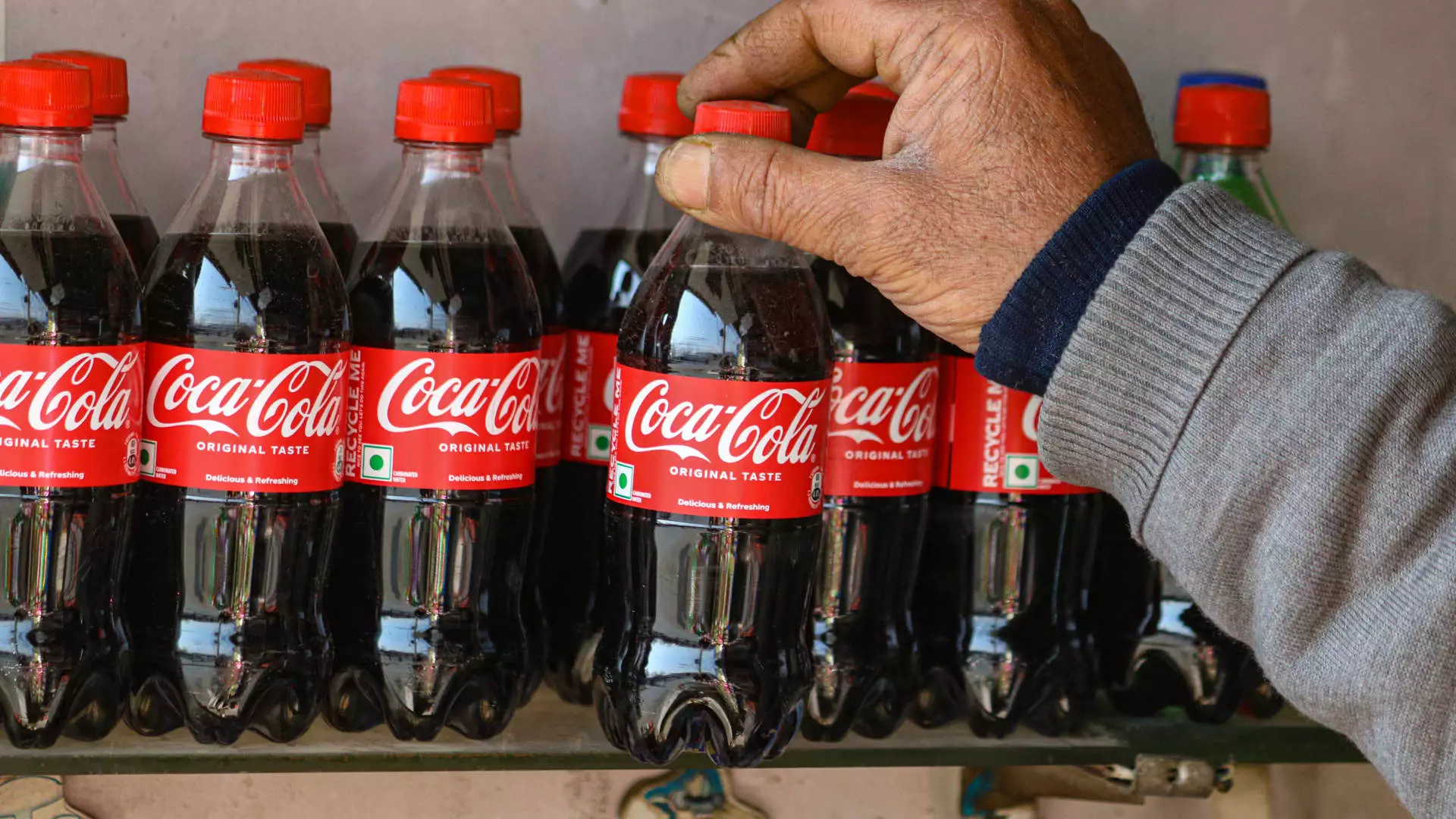Shifting Waters: Coca-Cola’s Packaging Dilemma Amid Tariff Turmoil

In an evolving economic landscape, Coca-Cola finds itself at a crossroads, prompted by President Donald Trump’s announcement of heightened tariffs on aluminum and steel imports. CEO James Quincey articulated the company’s adaptive approach during a recent earnings conference call, suggesting that an inevitable shift from aluminum cans to plastic bottles could be on the horizon if input costs rise sharply due to the new tariffs. This strategy underscores the complexities of supply chain management in a globally interconnected economy, where pricing structures are vulnerable to political changes.
Quincey’s remarks highlighted a crucial principle in business: adaptability. He noted, “If aluminum cans become more expensive, we can put more emphasis on PET [plastic] bottles.” This statement reveals a fundamental aspect of Coca-Cola’s strategy—maintaining affordability in a competitive market while navigating potential cost increases from raw materials. The implications of tariff hikes extend beyond immediate financial burdens; they require companies to reevaluate their operational frameworks and perhaps, even reconsider their commitment to sustainable practices.
While aluminum’s sustainability is often touted—thanks to its infinite recyclability—plastic’s footprint is equally contentious. Quincey’s assertion that shifting to plastic can mitigate impacts from increased aluminum tariffs raises significant environmental concerns. In 2018, the recycling rate for polyethylene terephthalate (PET), the type of plastic used in Coca-Cola’s bottles, stood at just 29.1%, starkly lower than the 50.4% recycling rate for aluminum cans. This disparity highlights a troubling trend: even as the company diversifies its packaging options, it may simultaneously exacerbate its environmental impact.
Coca-Cola has long been under scrutiny for its extensive use of single-use plastics, earning the unflattering title of the world’s worst polluter from Greenpeace for six consecutive years. Such criticisms amplify the urgency for the company to align its operational practices with sustainable principles, a commitment that appears to be wavering given its recent decision to decrease ambitious sustainability targets. How Coca-Cola reconciles its packaging strategy with environmental responsibility remains a pressing question as consumers increasingly demand accountability.
Despite Quincey’s determination to downplay the economic consequences of the tariff increases, the situation certainly merits further examination. He mentioned the potential to source aluminum domestically and increase customer prices as compensatory measures. However, these approaches may not entirely shield the company from market fluctuations. The beverage giant’s complex supply chain faces volatility, with rising costs potentially passed along to consumers, thereby impacting demand.
Moreover, as Coca-Cola pivots towards plastic in response to tariff-induced pressures, it must consider the broader implications of this strategy on consumer perception. With increasing awareness surrounding environmental conservation, how will customers react to a brand that shifts away from aluminum’s recyclability? The potential backlash could affect brand loyalty, which is a cornerstone of Coca-Cola’s longstanding market dominance.
Given these dynamics, Coca-Cola stands at a pivotal juncture that demands a robust rethinking of its packaging and sustainability strategies. While the immediate response to tariffs might involve more extensive use of plastic bottles, the long-term vision should center on innovative solutions that prioritize sustainable practices without compromising consumer affordability. The commitment to corporate responsibility could be the differentiating factor in a crowded marketplace.
As the world becomes increasingly aware of climate change and its effects, brands like Coca-Cola need to not only respond to market pressures but also lead by example. Implementing cleaner production methods, investing in biodegradable materials, or enhancing recycling initiatives could offset potentially negative public perception and align the company’s operations with the expectations of an environmentally conscious consumer base.
The trajectory of Coca-Cola’s packaging strategy in light of tariff implications goes beyond financial calculations. It encapsulates a larger discourse on environmental sustainability and corporate accountability that will define the beverage industry’s future. Critical choices lie ahead, and how Coca-Cola navigates this landscape will determine its relevance in a dynamically changing world.





